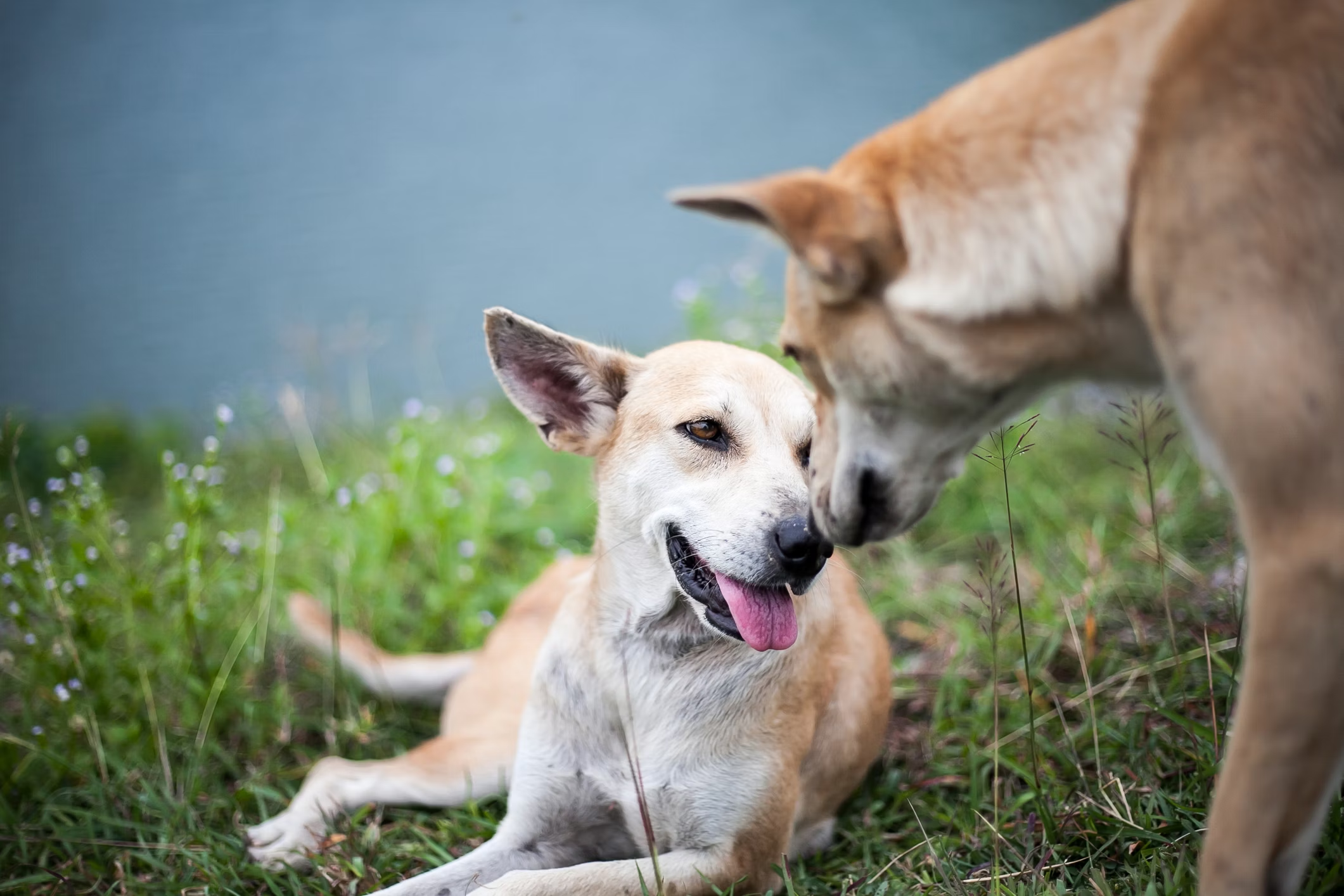Dogs are the ultimate companions. They’re by our sides for morning walks, movie nights on the couch, and trips to the beach. But that’s not all they share with us. Dogs also share a spectrum of emotions similar to humans. While you’ve probably heard about dogs experiencing anxiety or fear, you may not know as much about dog depression. So, let’s dig into the details so you can be ready to help your pup if they’re ever feeling down.
Common causes of dog depression
Unlike humans, who may experience long-term clinical depression, dogs are most likely to display signs of depression stemming from specific events. For example, researchers found that dogs that had lost a fellow animal companion experienced changes in their behavior that indicated the loss had an impact on their emotions. In other words, the dogs showed signs that the loss of their friend had impacted their mood. Changes in environment or routine may also trigger depressive signs in dogs.
Common triggers for canine depression:
- Loss of a human or animal companion
- Moving to a new home
- The introduction of new family members (this includes both two- and four-legged additions)
- Prolonged separation from family members (e.g., a dog’s best human buddy goes off to college)
- Chronic pain or other health issues
- Trauma
- Isolation (this can include things like the need to stay in a crate while recovering from an injury)
- Significant changes in routine (for example, if a pet parent who used to work from home has to start going to an office everyday)
- Lack of mental stimulation or physical activity (particularly for high-energy working breeds like the Border Collie or Siberian Husky)
Interestingly, a pet parent’s own mood can impact their furry friend. One study found that dogs can mirror the stress levels of their pet parents. This may indicate that dogs who spend time around people who are depressed may begin to show signs of depression themselves.

Signs of depression in dogs
Identifying depression in dogs can be challenging. After all, dogs can’t tell us how they are feeling. Signs to look for in your pup—particularly if they have recently experienced a potentially triggering event—include:
- Decreased appetite
- Changes in sleep patterns
- Low energy
- Disinterest in activities they used to enjoy
- Hiding
- Seeking more attention or affection from family members
- Increase in destructive behaviors
- Barking or howling more than usual
What to do if you suspect your dog is depressed
If your dog is showing any of the signs described previously, your best step is to schedule an exam with a veterinarian. Many of the signs of depression are similar to those related to other health conditions. Your veterinarian will be able to determine if there is an underlying health concern causing the changes in your dog’s behavior.
If other causes are ruled out and it’s determined that your dog is experiencing a form of depression, your veterinarian can suggest ways to lift your pup’s mood. This may include:
- Increasing exercise and stimulation, including more walks, playdates with other dogs, and puzzle toys for mental enrichment
- Adding meal toppers to encourage your dog to eat more
- Giving your dog more 1:1 attention
Depending on the outcome of your dog’s veterinary exam, your veterinarian may also recommend medications, supplements, environmental changes, or therapies to help address your dog’s specific circumstances.
Additional resources














